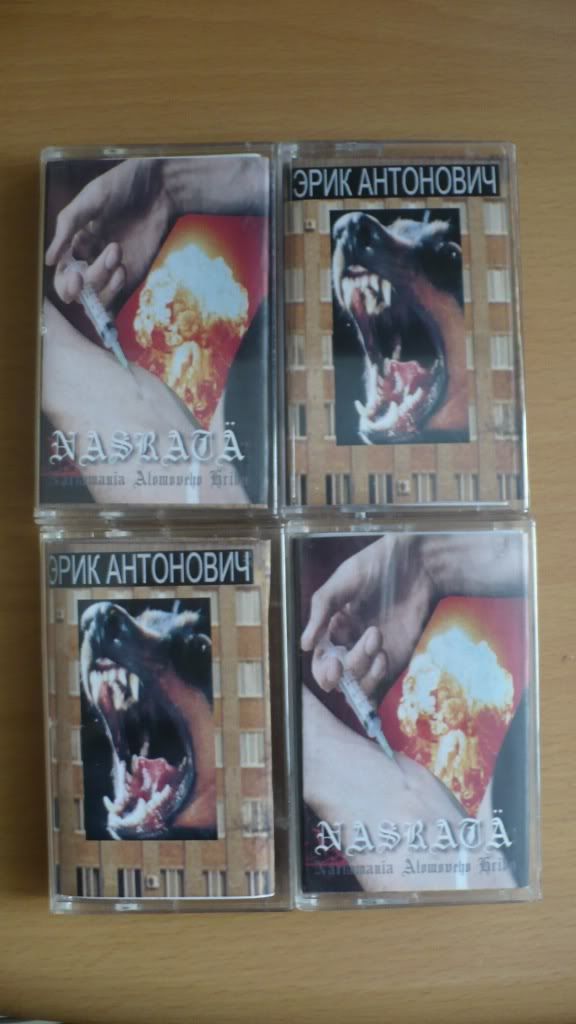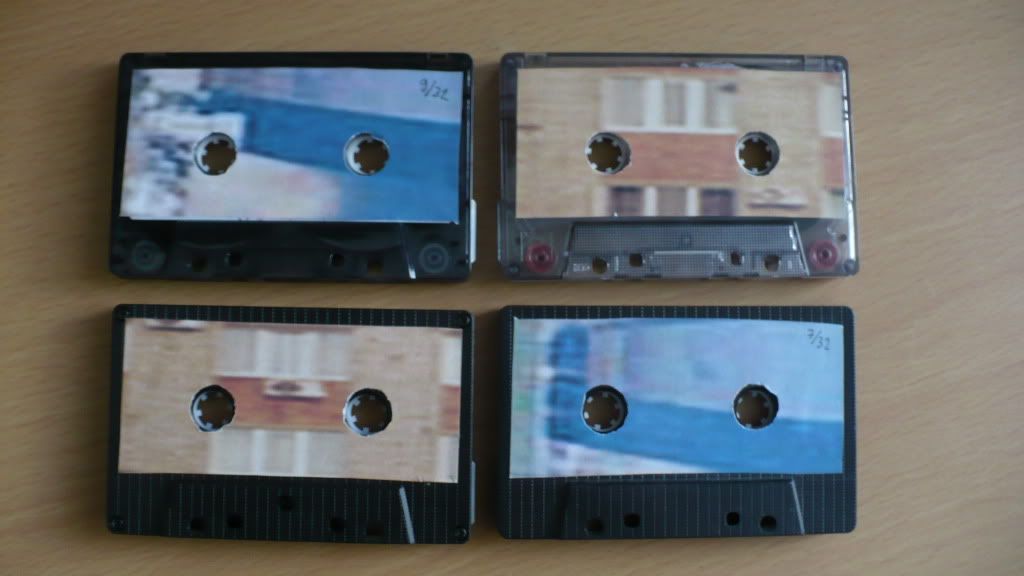akcia Obscure Hedonist
po dlhej dobe sa ocitne Drén opäť na pódiu vo Fuge (exBatelier) 28.4. Do vykrúcačiek vás privedú RBNX, Mindfuck, Noisebazooka, Uncribleu, Arrow a Cataract. Krásna akcia plná hnusne hlasnej nemuziky.

po dlhej dobe sa ocitne Drén opäť na pódiu vo Fuge (exBatelier) 28.4. Do vykrúcačiek vás privedú RBNX, Mindfuck, Noisebazooka, Uncribleu, Arrow a Cataract. Krásna akcia plná hnusne hlasnej nemuziky.

V dizertačnej práci vo forme časopisu Rotter bude zverejnený článok, ktorý objasní (aspoň z časti) fenomén hluku pre nehlukových poslucháčov, kde pod svetlami spovednice sa Drén zohrieval.
Noise: Art or Insanity?
We’re all familiar with noise in its simplest form. Alarm clocks. The hum of a busy pub on a Friday night. Rustling of the wrapping paper. Even the annoying
thumping and squealing that drifts through the walls from the floor above. Are you shagging a donkey up there? Christ. Still, if there’s one thing the unfortunate, accidental audio voyeuring has taught me, it’s that sound is something you can’t escape.
What you may not know is that some people use the sounds around to create music. This music genre is called ‘noise’.
It’s different and quirky which guarantees noise a spot on the outskirts of the musical domain. If you expect overflowing crowds and worldwide popularity, you’ll be wrong. Imagine noise as your twisted uncle who reads Nietzsche for fun and sometimes
pinches a barely legal girl’s butt. He is not a fame whore. You would more likely find him living it up at an obscure underground café or a small club saturated with pot smoke. Except, nobody smokes pot because it’s illegal, so I will say it was saturated
with ‘miscellaneous smell’.
Sometimes the music is accompanied by theatrical performance to express the meaning in more depth. You may get grabbed by your balls or boobs. You may witness an obese lady shucking off her clothes like it’s a high noon in July. You either hate it or you
love it. Erik, a performer with a stage name ‘Dren’, says what noise means to him: “It’s a perception of music. For me, noise can be found anywhere from a trolleybus to the ambulance siren.”
The reason he first tapped into noise was his fascination with the sound itself. “One example [of a random sound] could be an audio line, like feedback. You can grip that line, break it, twist it, form it any manner, destroy or mold it like a play dough,”
he explains. “Lot of people don’t realise that the base of music is sound, and there are lots of them. All you need to do is catch your own and play with it, create new forms and shapes.”
Erik’s discovery of noise was accidental. As a fan of metal, punk and other hardcore genres, he attended the concert of ‘Proti Cirkvi’ [Anti Church] in Bratislava, Slovakia, eight years ago. It was an open venue, flooding the city’s Gottwald Square filled
up with like-minded people. Some brought their CDs or fanzines to spread their musical efforts. Erik came up to them, asking if they had something nice and gritty.
At the time, he meant something along the lines of death metal, but what he got instead was a demo tape of Shitoba/N.N.P.V.O.S., Slovak ‘experimental shit noise’. Imagine his confusion when he finally listened to it. “I didn’t get it. It was all just a
hiss of noise from the radio interrupted by ads, accompanied by other static elements, sometimes by growling or something similar,” Erik says. “At first I was really mad that someone sold it to me as a prank, but after that I kept replaying it to the
point where it became one of my favourites.”
It was the ‘shit noise’ that propelled him into uncharted waters of this peculiar genre. Using his Hi-Fi system, he started to record the crackling sound of frequencies, chopping them into pieces then adding the sounds from video games, Austrian political
discussions or commercial songs. “It was a very
spontaneous, accidental composition and I was very happy with it! I created a collage cover for it, went to print it and then tortured my friends by making them listen to the tape,” he says.
As it is with artistic efforts, creativity tends to run on fumes and eventually come to a screeching halt due to a lack of inspiration. Without inspiration, that proper kick to your muse’s balls (or ovaries, if you will), creativity becomes a bottomless
pit of broody staring at the blinking cursor on your screen while stuffing your face with junk food. Okay, maybe that’s just me. I use music to inspire me, but what about a musician?
“I don’t have anything specific because it’s all about accidental compositions that I later work on in more detail.” Or as he adds with a grin, he doesn’t, the cheeky procrastinator.
Each interpret has his or her own methods of dealing, of creating. It’s the same with the style of creating noise. “Either they pull it up to a brutally and headache inducing sound wall or they smooth it over into a sophisticated minimalist soundscape.
Everyone has a sound they love. You can reach a sound similar to other interprets but the people I know, they create it because they love music with depth.”
Some of the audience that has attended a noise concert claims it’s not deep; it’s pretentious and strains towards a meaning that isn’t there. According to Erik, if he had a chance to argue his point and convince these people of the opposite, he simply
wouldn’t.
“I’m going to use an idea of the composer Vladimir Hirsch to explain why,” he says. “Members of an audience are, in its basis, receptors of certain stereotypical music composition. It’s difficult, bordering on impossible, to explain to the fans of punk,
metal, pop, or rap that noise has its own composition. That it’s not just a meaningless racket they perceive it as.”
He thinks that if they don’t see anything in it, they will never seek the meaning inside when they love and play music that has its own set rules. By rules, Erik means the repetition of stanzas, chorus, occasionally with a solo thrown in. “They often
shake their heads, saying ‘oh god, how can one song last for over and hour?’. But why not?,” he asks. “There is no written rule that it has to be three minutes long.”
Sound is the basis for everything. Rhythm. Composition. It is the sound that allows people to recognise the different melodies of musical instruments, that helps people tune them. “We find sound as an experiment and a game in movements like futurism or
Dadaism. It plays its role in the history of art and aesthetics. But imagine me trying to explain this to a fan of commercial popular music who loves clubbing.”
But noise is not always just about the sound. As was mentioned, it can be quite controversial when it comes to the theatrical performances. Erik thinks that’s what a good artists does: “Every performer proves his or her artistic merit by begin able to get
under your skin.”
One of the strongest experience he had was during the performance of Einleitungszeit accompanied by a fire show of an artistic body called Amanitas. Another one was Con-Dom, a one–man industrial noise band of Mike Dando. The stage name is short for
Control-Domination. Regarding the short version of Dando’s name, feel free to keep your minds in the gutter because ironically, “he is renown for his critical thinking followed by public masturbation.” I would say it’s hard to beat that, pardon the
pun.
However, noise is not always a one-man show. Sometimes it is performed with the aid of another person. Erik plans to do the concerts individually and explains jokingly: “My partner from the first concert is busy with other obligations such as studying
Auerbach or watching C class horror movies.”
I have to say; those are so bad you can’t tear your gaze off the screen. It’s all a matter of personal perception. Just like noise, you either fall in love with it or run away in the opposite direction, screaming. Go see a noise performance and
make the judgement for yourself.
Patricia Pribolová / Rotter magazine 2012
Úctivo ďakujem za rozhovor a parádný článok!
Včera večer keď ste sa dusili kostičkou od kapra a zdobili stromček, v ďalekej zabahnenej Petržálke sa zrodil v dielni Už Bolo Dosť! nový release vo forme kazety. Tentokrát netradične sa nejedná o klasickú hlukovú kompozíciu, tá sa bude vyskytovať pomerne zriedka. Tentokrát to bude o rytmickom využití nástrojov ako klince, šróby, plechy, kladivá s použitím gitary, ktorá spraví menšiu minimal doomovú atmosféru a do toho všetkého spev (alebo žalm?) pochmúrny z tmavých chodieb závodov Matador. Využili sa aj netradičné zvukové linky ako reťaze, kľúče od bytu či starý telefonny záznam. Prvý sólo pokus využitia industriálu v konvenčné stavaných prvkoch. O druhú stranu kazety sa delí NASRATÄ. Nukleárna skáza metalu v punkových a disbeatových princípoch, ktoré vás presvedčia že svet sa blíži k poznatku že zdroj šťastia je atómová energia ktorá nám bude kolovať v žilách. Projekt Pusikela (Likvidácia, Soulscars, Avgrund) stojí za povšimnutie svojím špecifickým zvukom a jednoduchou progresivitou v skladbách. Vydanie je limitované na 31 kopii, môžete ich zakúpiť priamo na ubdlabel@centrum.sk prípadne budú k dostaniu na koncertoch ako Hlukové Mysteria, koncerty na garážoch a tak ďalej. Poslucháčom prajem šťastné prežité sviatky. Nezabúdajte ale na to kto ste, odkial ste a trávte ich s ľuďmi ktorých máte úprimne radi.

